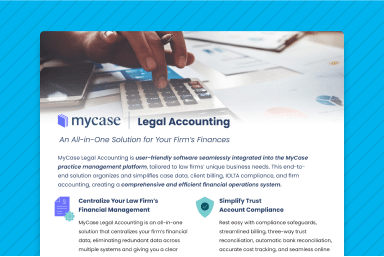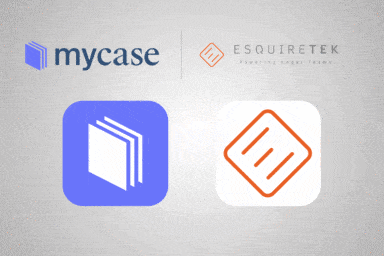Ineffective Intake Practices Can Affect Your Online Reputation
In the over 20 years I have been working with law firms, I have set up intake departments, developed the corresponding technological infrastructure needed to support the processes that make them work, hired and fired applicable employees, audited law firms’ intake systems, and worked with legal technology companies to develop intake software. This includes spending years taking the actual intake calls myself for a personal injury practice that advertised (which translates into a higher-than-average inbound call volume).
I can therefore say with absolute certainty that new case intake can make or break a business, especially a business that spends time, money, and other resources acquiring clients through business development, advertising, and marketing. But, even if a law firm isn’t actively spending money and is acquiring clients based on its established goodwill, its intake process must back up its reputation or else it will cost them as well.
Read Part 1 of this blog series.
Common Intake Issues and How Case Management Software Can Help
The list of problems I’ve seen in law firm intake is seemingly endless and varies by size of firm and practice areas; however, some common intake issues are universal – and many of them can be resolved by using already existing case management software to its full capacity. Some of the most common issues in law firm intake include:
Lack of Training
Problem: Lawyers get frustrated when someone who interviews well for a position struggles with their job duties. The reason for this disparity is often that the firm has lackluster or nonexistent onboarding processes for new hires. Having someone represent your law firm as the first point of contact in the intake department requires real, hands on training.
Solution: Designate an employee (or consultant) who understands your business and enjoys training others as the person responsible for onboarding new intake hires. Have that person develop a procedure manual and review it in advance to ensure it is comprehensive and covers the ethics rules in your state. That person must also be an expert at using your case management software so they can train the new hire on how to work through the intake process within it.
Being Inefficient
Problem: Law firms are notoriously inefficient. I have worked with firms that use more than one software program (I’ve seen up to FOUR) when it’s completely unnecessary, which requires staff members to do the same tasks multiple times in multiple locations, leaving room for lots of user error. Some law firms use only an Excel spreadsheet (and no software), which is concerning for the opposite reason: that one single file could easily get deleted, have data overwritten within it, or become corrupted. It also makes it exceptionally difficult to parse out data if it is ever to be used again for remarketing or other purposes. In both scenarios, it is a mistake to have highly trained staff do manual work when it’s not necessary.
Solution: Build out the entire intake process within your case management software, including inputting any and all qualifying questions you want asked into the system so that information is captured and kept with the lead as it progresses. In addition, law firms should code any applicable documents needed to convert the lead into a client (e.g., an employment agreement) to afford consistency and uniformity across the legal documents used in your practice and so employees don’t have to search and find files to copy and paste, which again leaves room for user error.
Not Nurturing Leads
Problem: Not all leads convert instantly, even with the best intake process possible; therefore, your law firm must have a lead nurturing sequence. Unfortunately, most law firms don’t. If you assume a lead should sign up immediately or else you’ve failed, you’re missing out on converting very valuable potential clients.
Solution: Develop a lead nurturing sequence within your case management software. While the actual systems can vary by firm, the starting points are essentially universal. Using parent-child functionality (or tasks that trigger off of each other), you can set up a process that begins something like this:
- Lead arrives by phone call/contact form submission/live chat/another conversion mechanism
- Place an “Initial Call” immediately if possible or on the next business morning
- Send a “Follow Up Email #1” immediately if you are not able to reach the lead with the initial call, providing every possible way to reach and/or connect with the firm (phone, social media, email, etc.)
- Place a “Follow Up Call #1” within 24 hours of initial call or on the next business morning
How Your Intake Process Can Affect Your Digital Presence
Most lawyers would never make a correlation between their intake process and their online presence, but I promise you they interact. For example, if you fail to respond to a contact form submission, that lead can rightfully leave your law firm a negative review saying you are non-responsive and do not treat those who seek your advice with due care. In addition, other connections between intake snafus and digital success include:
- If you outsource intake and don’t engage in ongoing quality control over the vendor you use, you may not be putting your best face forward; leads can indicate that on sites like Avvo that rate lawyers
- If you receive leads sent from referral sources such as other attorneys or personal friends and your intake department treats them badly (yes, even if they don’t have a case you’d take), you will burn bridges that might bear financial fruit in the future and negatively impact your goodwill and reputation in the community, which can translate into negative online scuttlebutt in Facebook or LinkedIn Groups
Monitoring Your Law Firm’s Online Reputation
In order to avoid digital negativity about your law firm, the best course of action is to plan in advance by developing intake systems that prevent any potential client from having a bad experience or slipping through the cracks. Regardless of the best laid plans, at least some people who interact with your law firm will have a mixed experience (or think they did), and so you need to have some idea of what is being said online about you as a lawyer and your law firm as a business. Be sure to use free tools like Google Alerts to monitor mentions of your attorneys’ names and your law firm name in real time, and always check your Google, Facebook, and attorney ratings site reviews and respond to them even if they are positive to show you are engaged and that you care.
| Stacey Burke is a 19-year attorney who provides consulting services to law firms. She has worked with over 300 law firms in a wide range of practice areas across the United States. She litigated in the field of consumer advocacy before transitioning to a consulting career eight years ago. She has won legal industry accolades including the President’s Award from the Houston Bar Association and has been selected as a Texas Super Lawyers Rising Star. Her work has also been published in the Texas Bar Journal, Trial magazine, and Legal Business World. Her consulting company has won the American Marketing Association Crystal Awards for Online Marketing in Google Analytics and for Print Collateral or Direct Marketing: Company or Organization Brochure. She lives in Houston, Texas with her husband, two teenage daughters, and two French bulldogs and eats a lot of popcorn. |


